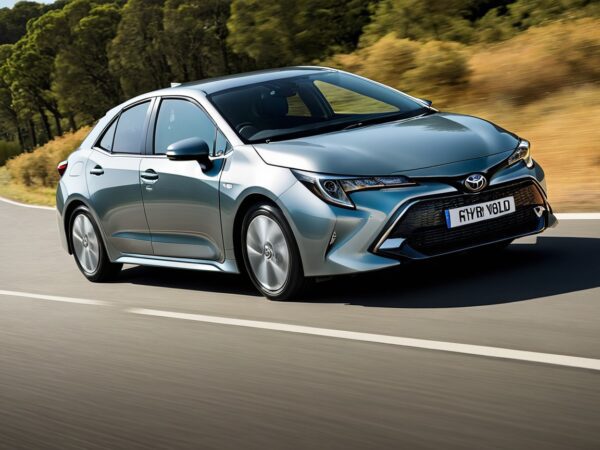Toyota Hybrid Cooling System

🌿 Toyota Hybrid Cooling System: A Comprehensive Overview
Toyota’s hybrid vehicles, such as the Prius, Camry, RAV4, and Highlander, have become synonymous with fuel efficiency and reliability. A critical yet often overlooked component that helps these vehicles perform smoothly and efficiently is the hybrid cooling system. Unlike conventional vehicles, Toyota hybrids have multiple cooling systems working together to maintain optimal operating temperatures for various components, particularly the internal combustion engine (ICE), inverter/converter, and electric motor/battery system.
🔧 Why Cooling Matters in a Hybrid
In any vehicle, heat is a byproduct of combustion and electrical operation. If not managed properly, excessive heat can lead to:
- Engine overheating and damage
- Reduced efficiency of the inverter/motor
- Shortened battery lifespan
- Reduced overall performance
Because Toyota hybrids operate with a hybrid synergy drive system, which combines gasoline and electric power, they require specialized cooling strategies for each major system.
🔍 Key Components of the Toyota Hybrid Cooling System
Toyota hybrids generally feature three separate cooling loops or systems:
1. 🔥 Engine Cooling System (Traditional Coolant Loop)
This system is similar to that in conventional gasoline-powered vehicles:
- Radiator: Dissipates heat from the coolant fluid.
- Water Pump: Circulates coolant through the engine and radiator.
- Thermostat: Regulates coolant flow based on temperature.
- Coolant Reservoir: Holds excess coolant and maintains pressure.
- Radiator Fans: Help maintain optimal temperature when the vehicle is stationary or under heavy load.
This system cools the internal combustion engine (ICE), ensuring that it doesn’t overheat during extended periods of use or in hot environments.
2. ⚡ Inverter Cooling System (High-Voltage System Cooling)
One of the most critical cooling circuits in a Toyota hybrid, this system cools the power inverter/converter and electric motor-generators (MG1 and MG2).
Key components include:
- Inverter Coolant Reservoir
- Electric Water Pump (separate from the ICE pump)
- Cooling Lines dedicated to the inverter
- Mini Radiator (or inverter radiator)
The inverter manages the flow of electricity between the high-voltage battery and the motor-generator units, and it generates substantial heat. If this component overheats, it can lead to performance loss, power failure, or expensive inverter damage.
3. 🔋 Battery Cooling System (Hybrid Battery Fan)
This is especially important in full hybrids like the Prius:
- Cooling Ducts: Bring cabin air into the battery pack.
- Cooling Fan: Located near the battery (usually under the rear seat or trunk area), it forces airflow over the battery cells.
- Thermal Sensors: Monitor battery temperature and adjust fan speed accordingly.
Most Toyota hybrids use air cooling rather than liquid cooling for the battery, although some newer plug-in hybrids (like the Prius Prime or RAV4 Prime) may feature liquid-cooled battery packs.
🌡️ Operating Principle
All three systems work independently, but they coordinate through the vehicle’s hybrid control ECU (electronic control unit). When the vehicle is started, the ECU determines which systems require cooling and engages the appropriate components. During driving:
- The inverter cooling pump may run continuously to cool the electric drive system.
- The battery fan may cycle on and off based on thermal readings.
- The engine coolant loop operates as needed, controlled by engine temperature and load.
✅ Benefits of the Multi-Cooling System Approach
- Enhanced Reliability
- Segmented systems reduce the chance of a single-point failure.
- If the inverter pump fails, it doesn’t necessarily affect engine cooling.
- Improved Efficiency
- By keeping each system at its optimal temperature, energy loss is minimized.
- The inverter operates more efficiently when cool, improving electric motor performance.
- Battery Longevity
- Regulated thermal management prevents battery overheating and degradation.
- This is essential for maintaining Toyota’s 8–10-year hybrid battery warranty standards.
- Quiet Operation
- Most cooling pumps in hybrids are electric and brushless, offering near-silent performance compared to traditional belt-driven ones.
⚠️ Common Issues and Warning Signs
Though Toyota hybrid cooling systems are well-engineered, they’re not immune to problems:
1. Inverter Water Pump Failure
- A known weak point in early Prius models (2004–2009).
- Symptoms: Warning lights on the dashboard (e.g., red triangle, check engine), reduced power, system shutdown.
2. Low Coolant Levels
- May indicate a leak in the radiator or inverter coolant loop.
- Symptoms: Overheating warning, poor performance, or no start.
3. Clogged Battery Fan
- Accumulates dust and debris over time.
- Symptoms: Loud fan noise, battery overheating, reduced performance.
4. Air in Coolant System
- Can occur after a coolant change or component replacement.
- Symptoms: Gurgling noises, inconsistent cabin heat, or system warning.
🛠️ Maintenance Tips
To ensure your Toyota hybrid cooling system operates efficiently, follow these recommendations:
| Component | Recommended Service |
|---|---|
| Engine Coolant | Replace every 100,000 miles or 10 years, then every 50,000 miles |
| Inverter Coolant | Same interval as engine coolant |
| Coolant Type | Use Toyota Super Long Life Coolant (pink), do not mix with other coolants |
| Battery Fan Cleaning | Every 30,000–50,000 miles (especially in dusty environments or if you have pets) |
| Inspect Coolant Pumps | Check for noise or lack of circulation at regular service intervals |
🔄 Conclusion
The Toyota hybrid cooling system is a vital part of the vehicle’s performance and longevity. By utilizing multiple independent cooling loops, Toyota ensures that the engine, inverter, and battery each operate within their ideal temperature range. This sophisticated design helps deliver the legendary reliability, fuel economy, and low emissions Toyota hybrids are known for.
However, to keep your hybrid running optimally, regular maintenance is key. Watch for early warning signs like strange noises, dashboard alerts, or temperature spikes, and always use the recommended Toyota-approved fluids and parts.
Would you like a cooling system diagram, a maintenance checklist, or a troubleshooting guide for your specific Toyota hybrid model?


